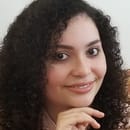When we come together, there’s something we all share: language. We need it in order to communicate with others, whether by an auditory or visual medium. In a fictional setting, (books, movies or television shows) language can be used as a tool for characters development. The number of languages spoken by a character can establish their level of intelligence or their place of origin, as well as what type of setting they inhabit. When entering a different world, another type of language is needed in order to create a unique backdrop for the story. This is where constructed languages or “conlangs” emerge; this is a type of language where its phonology, grammar, and vocabulary were created by a person or a group of people instead of it developing naturally over time. We have a good example of this in the Marvel Cinematic Universe (MCU).
While most of the dialogue in the MCU happens in English, there are few instances where characters speak a language that we haven’t heard before. This is seen in the film Thor: The Dark World (2013), which follows the superhero Thor and the scientist Jane Foster after she becomes the host of an ancient weapon. Both of them must travel to Asgard before she is captured by the Dark Elves and becomes a weapon to destroy Asgard.
In this film, we have the example of the Shiväisith language, which is spoken by the Dark Elves. It was developed by the linguistics scholar David J. Peterson, who had previously worked on creating the Valeryn and Dothraki language for the television series Game of Thrones. Shiväisith is described as a soft language because letters that are considered “hard” like d, k, and g, are pronounced like letters that are heard as “soft”, like f. This weakening of the pronunciation of consonants occurs in some real world languages such as Finnish.
Shiväisith can be heard early in the film when the elves Kurse and Malekith are speaking about their battle with the Asgardians. In that moment, Kurse announces “Äskärdhiksel ävil jenäsky” [The Asgardians are upon us]. You can hear this phrase pronounced in this video (skip to minute 00:34). The way it sounds is inspired by the Finnish language, thus, setting up a connection to the myths and legends that inspired the comics and movies.
Peterson also worked on the film Doctor Strange (2016) to create Nelvayu. In this movie, after neurosurgeon Dr. Stephen Strange injures his hands, he goes to train in a secret enclave that protects different realities in order to heal them. Soon, Strange must protect his world when dark forces threaten to destroy the different realities. Nelvayu was used as a chant in the scene when Kaecilius, the film’s villain, and his followers kill the librarian guarding an ancient text. While there is not a lot of information on this language, you can hear an extended version of this chant here.
In a world that has about 7,000 languages, why should you care about the ones that are not real? Well, conlangs are a perfect example of how reality and fantasy merge in order to create a new universe. They make fictional worlds seem more real, as if they were concrete concepts for the viewer and not just abstract ones. These languages not only give the characters a sense of complexity, but also further develops them. For the MCU, the conlangs help solidify the fact that Marvel is a universe filled with different characters, places and teams. With the new films and series set to premiere in the following years, it is interesting to see what other conlangs will be developed for them.



